By Brian Chan
Yamaha Pro Angler
Yamaha Pro Angler
The arrival of summer brings hotter temperatures and changes to the local trout lakes and fish behaviour. At this time of year, I often get asked where and what the trout feed on during hot weather and why fish in some lakes taste muddy.
To answer these questions, one must understand the changes that are occurring within the lake itself. The heat from the sun has now warmed shallow to the point where most aquatic insect hatches, such as chironomids or midges, mayflies, caddisflies, damselflies and dragonflies, have occurred. Especially during daylight hours, the upper layers of water can become too warm for trout so they will seek the cooler depths where both temperature and oxygen levels are suitable for their survival. Living in the deeper parts of the lake means the diet of many trout will now typically consist predominantly of zooplankton, immature dragonfly nymphs, leeches, and scuds or shrimp.
Zooplankton are the almost microscopic “water fleas” that you see swimming in your glass of lake water. Daphnia and Cyclops are two common species of zooplankton found in many small trout lakes. While tiny in size, zooplankton gather in large masses or clusters and are easily fed on by fish. Trout feed on Daphnia and Cyclops because they are found at all depths of the lake and are easily filtered through the gills and swallowed. Fly fishers are finding success using blob fly patterns. These often brightly coloured flies imitate a small cluster of Daphnia or Cyclops. Spin fishers can do well trolling flashy spoons or lures deeper in the water column where the trout are more concentrated.
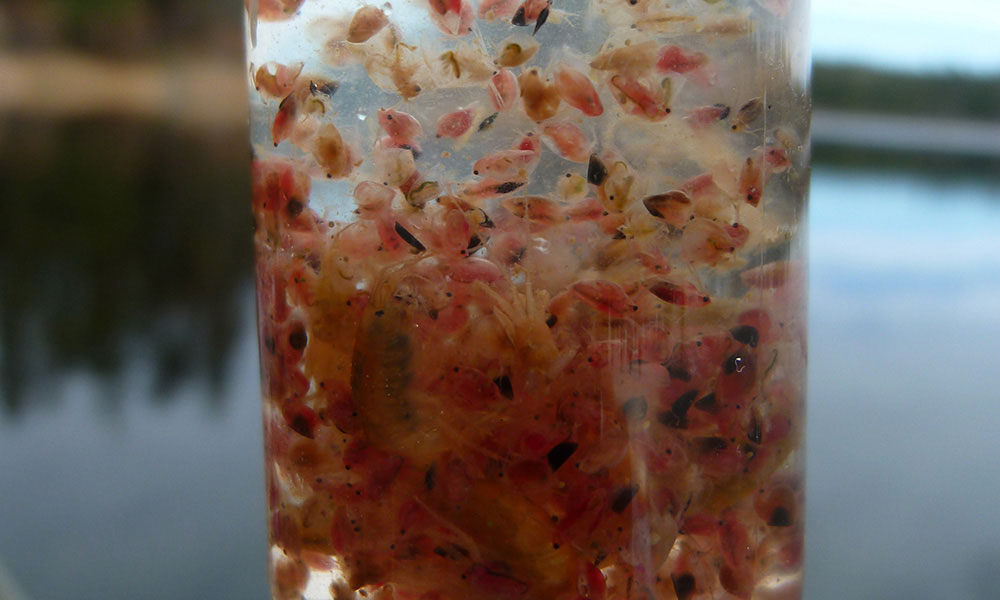
Dragonflies can live for up to four years in the nymphal stage before emerging as an adult. Some species can reach almost 5 cm (2 in) in length and are a year-round food source for trout and other species of fish. Leeches are also present throughout the year. When fully extended, they can reach 25 cm (8 in) in length – certainly, a mouthful for any trout!
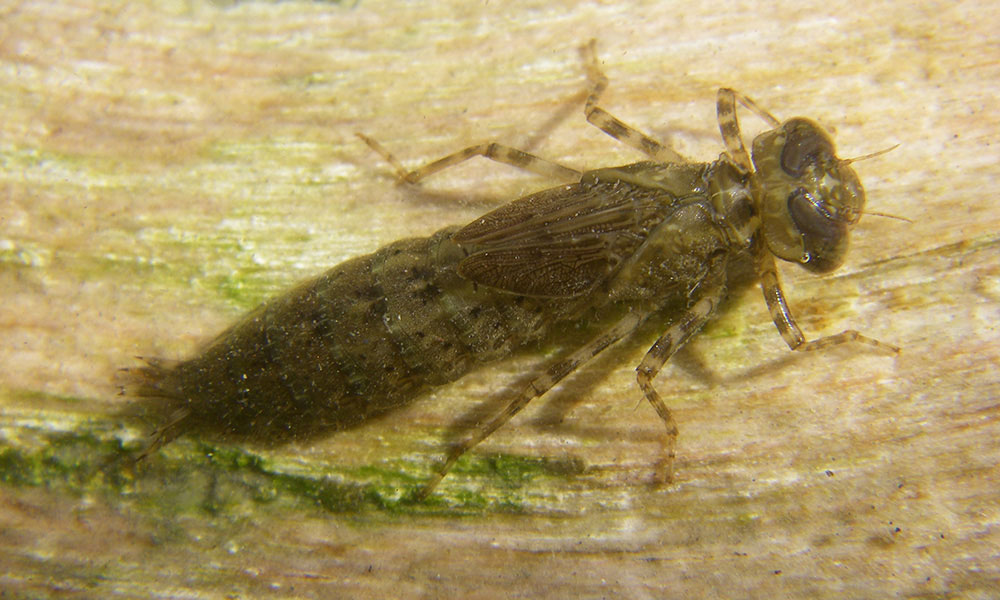
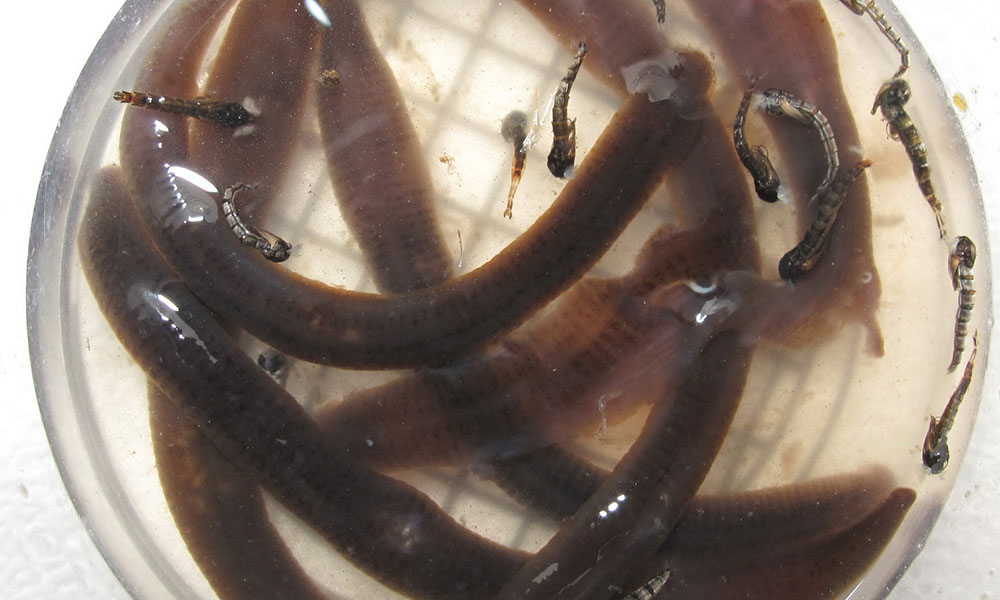
Shrimp are also on the menu and a staple diet item because they are available at all times of the year, although not found in every lake. They require high levels of calcium in the water to maintain their chitinous exoskeleton. Lakes that have good shrimp populations are always very productive and have the capability to grow big fish.
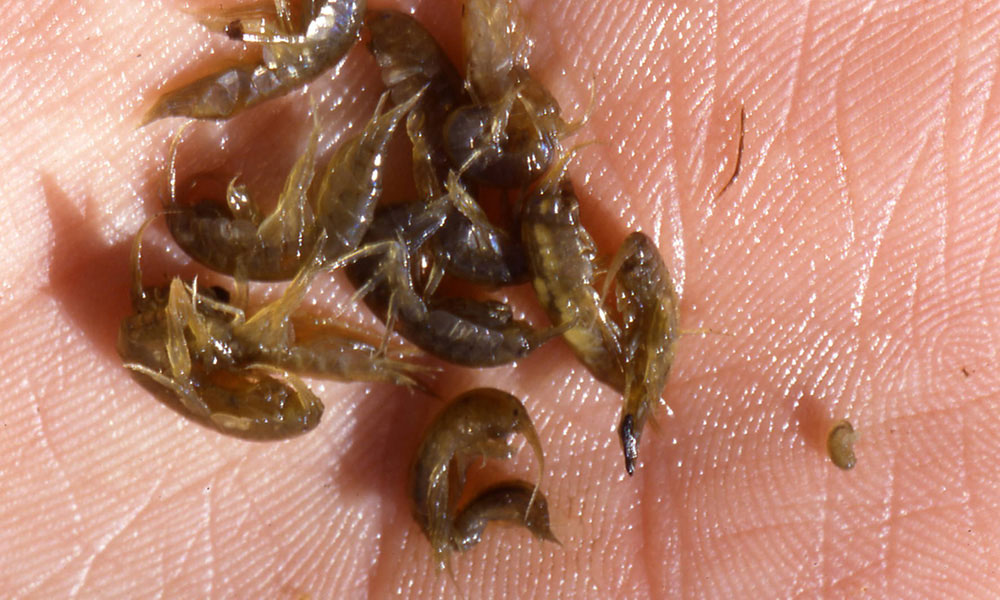
It’s important to remember that at this time of year the shallow areas of the lake, which are often associated with good fishing, are too warm for trout during the day. It is after the sun is off the water and the temperatures cool that the fish will actively feed. Big food items like dragonfly nymphs and leech fly patterns are very effective at this time.
Also associated with summer weather is the occurrence of off-flavoured or “muddy” trout. This condition occurs in many productive lakes, especially ones situated at lower elevations.
Muddy trout are not a result of a muddy lake bottom. The off flavour is a result of blue/green algae blooms, which thrive under sunny weather and warm water. These blooms appear like a carpet of short yellowish/green grass clippings or spheres the size of small pin heads. They literally blanket the upper two to three meters of water but are thickest near the surface.
These blue/green algae release certain chemical compounds that are absorbed through the skin of the trout and accumulate in the fatty layer just under the skin. Trout will typically remain muddy until the fall when the amount of daylight and algae growth lessens, and the water temperature drops.
Fishing during this time of year is often referred to as the summer doldrums. But understanding a little lake biology and fish behaviour should improve your angling success.
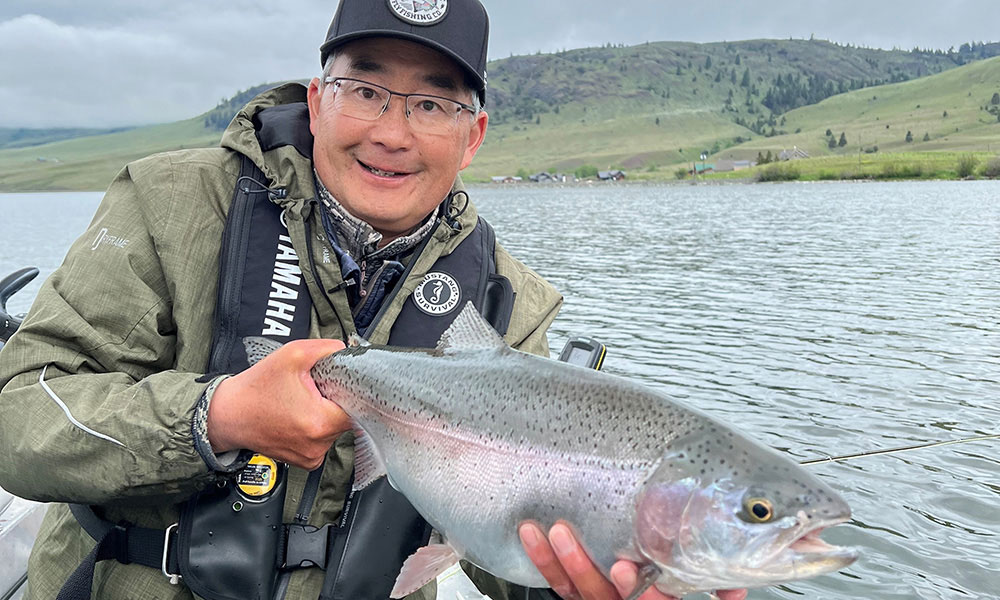


 All Yamaha News
All Yamaha News